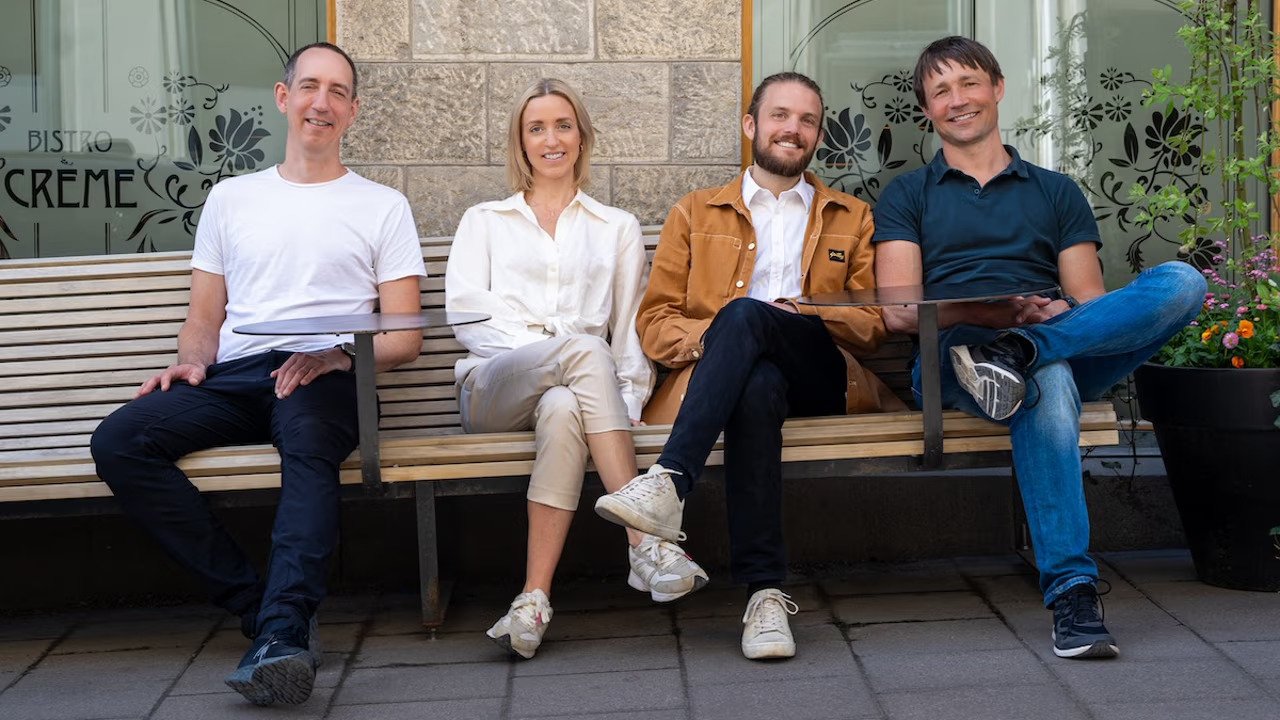In construction, even the smallest design error can have significant consequences — a ramp that’s too steep, a doorway that's too narrow, or a misplaced sensor that costs weeks to fix. Most of these are preventable mistakes, and now, Swedish startup AI-BOB is tackling that inefficiency head-on.
I spoke to Elin Mårtensson, co-founder and CEO of AI-BOB to learn more.
Mårtensson has a near 15-year background in the construction industry, initially as a property developer on large-scale projects like Mall of Scandinavia in Stockholm and also Fisketorvet here in Copenhagen, where she was responsible for the extension project.
Accessibility errors are everywhere — and almost always avoidable
Over time, she became an expert in accessibility and usability in buildings, as a result of working part-time as a student, helping a blind girl with navigation:
“It was such an eye-opener. It made me realise how many unnecessary barriers we put in the built environment.”
And when she worked as a property developer. She saw that accessibility and compliance issues were a recurring problem in every project — and they caused a lot of avoidable errors that had to be fixed later.
She shared:
“Many errors are so unnecessary. For example, ramps that are too steep, doors that need two hands to open — small things that make a building inaccessible for someone in a wheelchair or with low vision.
I see these issues everywhere — and they’re almost always avoidable.”
Mårtensson eventually started my own company reviewing projects for compliance with accessibility and usability regulations. She shared:
“I worked closely with architects, reviewed hundreds of blueprints, and did final on-site inspections. After a while, I got so tired of seeing the same errors appear again and again. Most of these issues could have been avoided much earlier in the process."
70% of construction errors start in the blueprints
Studies show that over 70 per cent of all construction errors actually originate in the blueprints — meaning it’s not the builders’ fault. They’re just working from wrong or incomplete information.
Prior to AI-BOB there was no real tool to help architects or property developers properly check their blueprints. Most of the process still happens in Microsoft Word, Excel, or endless email threads — nothing automated.
According to Mårtensson in one project alone, you can have tens of thousands of requirements — “BIM standards, environmental targets, national codes, accessibility, and EU-level regulations, plus all the project-specific ones. No tool helps coordinate all that. In a way, construction performs amazingly well given how much complexity they have to manage manually.”
A 2018 Swedish government study found that around 25 per cent of all construction budgets in Sweden are spent on fixing errors. It's not only a waste of money but also materials, CO₂ emissions, and labour.
“Every time you fix something, you need people who are delayed from another project,” shared Mårtensson. It's a waste on every level.
Mårtensson started AI-BOB about a year and a half ago — right after I’d been on maternity leave with my second child.
“I finally had some time to think, and this was also when the big AI boom started. I read everything I could about AI and thought: maybe now we actually have the tech that can help this industry. So that’s when I started AI-BOB with my co-founders.”
Pre-deployment testing for construction
Construction is a €13-14 trillion industry globally — and 25 per cent of that goes to fixing mistakes. Mårtensson admits,
“When I told our CTO — who had worked at Spotify setting up their transaction engine (every song stream is a transaction) — he said, ‘You’re kidding me, there are no automated checks before you start building?’ In tech, you’d never deploy software without automated checks. That’s exactly what we’re trying to bring into construction: automated pre-deployment testing for buildings."
AI-BOB uses AI to automate compliance checks on blueprints directly in the BIM model.
“We can check if designs comply with building regulations and produce reports — even suggest corrections on how to fix detected issues,” explained Mårtensson.
Built to fit existing workflows
The platform integrates directly into the CAD software. “That was really important for me — in construction, everything is about mitigating risk,” admits Mårtensson.
"You can’t just drop in some new standalone product and expect people to adopt it. Construction projects run for five to ten years. You need to fit into their existing workflow.”
For architects, AI-BOB works like a spell-checker inside their CAD tools — they don’t need to change behaviour. “For property developers — the company’s main customers — it integrates with their project platforms, giving them a dashboard view: do we have the most relevant requirements, do we meet them, who’s responsible, and when were decisions made? It’s about giving them data-driven control for the first time.”
“Dream customers” and early traction
From the start, AI-BOB has had what Mårtenssonwe calls “our dream customers" — White Arkitekter and CF Møller — on board as early collaborators.
"They’ve given us continuous feedback: are we solving the right problems, does this actually make their work easier, is this something they’ll use? And now we’re also starting pilots with property developers.”
Mårtensson contends that this sector represents one of the biggest opportunities in the built environment. Beyond efficiency, AI-BOB is very purpose-driven as a company.
“We want to reduce the number of errors, cut CO₂ emissions, and make high-quality, affordable buildings possible — schools, hospitals, housing. There should be no excuse not to build the best you can. If we can deliver buildings on time, on budget, and with less waste, we can really move the needle on sustainability and affordability,” shared Mårtensson.
AI-BOB is currently active in Sweden but is looking to expand to new markets.
Lead image: AI-BOB. Photo: uncredited.



Would you like to write the first comment?
Login to post comments